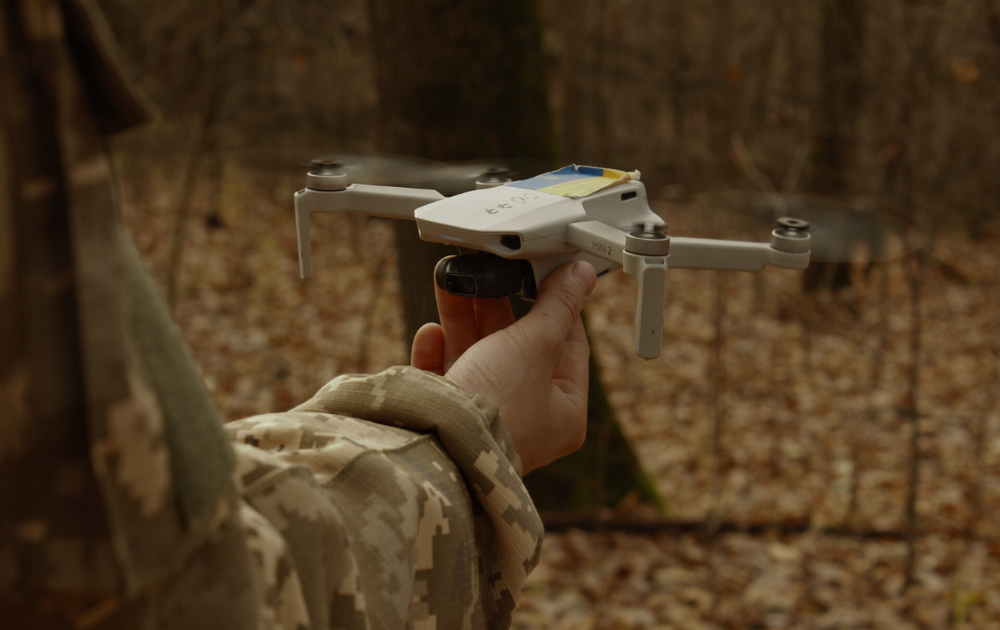Since December 31, 2020, the European Union has been subject to uniform rules and requirements for pilots and drones developed by EASA (European Aviation Safety Agency). For illegal flights or actions that violate these rules, you may be subject to fines of around €1000. For legal flights in Europe, there are currently three types of "operations", i.e. flight rules:
1. Open category: for flights of small drones within the line of sight (VLOS), which pose the lowest potential risk to others.
2. Special category: for medium-risk flights requiring prior authorization.
3. Certified category: for high-risk flights that require certification of the drone, pilot, and operator.
In this article, we'll talk about the rules for the open category, which can be used by amateur pilots. First, let's determine which class your drone belongs to. If the weight of your drone does not exceed 25 kg, it can fly according to the rules of the open category.
What factors determine the open category of drones:
- Takeoff weight of the drone is up to 25 kg.
- Maximum permissible flight height is 120 m.
- Flight range is limited to no more than the line of sight* between the pilot and the drone (VLOS).
*Line of sight means the distance at which the pilot can clearly see the drone without the use of additional optical devices other than vision correction glasses.
If you are ready to comply with these restrictions, congratulations: you can fly under the rules of the open category. To fly in the open category, the pilot is required to register, obtain a certificate, and mark the drone with the pilot's personal number.
Some exceptions are very small drones with a takeoff weight of less than 250 g. Drones weighing up to 250 g do not require a pilot's certificate to fly, but registration** of the user as a drone operator is required.
**Operator registration differs from pilot certification in that it does not require training and an exam, but rather a registration procedure on the EASA website.
Which certificate do you need? It depends entirely on the weight of your drone. The open category is divided into subcategories - A1, A2 and A3, based on the weight of the drone.
- Category A1 covers drones weighing up to 900 grams. These are the smallest and, therefore, safest drones in the open category.
- Category A3 covers drones from 4 kg to 25 kg. This category mainly includes large sports models and agricultural drones. Although they are large, they are usually flown in specially equipped flying clubs or in fields where they do not pose a threat to others.
- Subcategory A2 covers drones from 900 g to 4 kg. This category includes most of the specialized filming drones (Mavic 2, Mavic 3, Inspire 1, Inspire 2) used for film and television production.
There are two separate certificates for these three subcategories. The first one includes two subcategories A1 and A3 (up to 900 g and 4 to 25 kg), and the other one includes a subcategory A2 (900 g to 4 kg). Now you know which certificate you need.
These certificates can only be obtained sequentially: first the A1/A3 certificate, and then the A2 certificate. At first glance, this division may seem strange, but it has its own logic. In the A2 category, drones are often used near people and buildings, which is dangerous in itself. In addition, they have sufficient mass and power to pose a real threat to others. For these reasons, the A2 subcategory requires additional training and certification.
If you own a drone weighing up to 900 g or from 4 to 25 kg, you only need to obtain an A1/A3 certificate. To do this, you need:
1. Register on the EASA website as an operator.
2. Take a training course in one of the European languages or in English.
3. Pass the online exam.
After passing the exam, you will immediately receive a PDF file with your pilot certificate.
Fun fact: the curriculum for the A1/A3 certificate has nothing to do with your knowledge and skills as a drone pilot. This program and the subsequent exam are purely legal in nature and include the rules for the use of airspace by drones in the European Union. These are the "rules of the road" for drones. As in the case of cars, you can pass the exam according to the rules even without drone flying skills.
If you have limited time or want to simplify the bureaucratic procedures, our school will help you get a certificate. We have simplified and accelerated this process for our students as much as possible.
- Training is conducted online, in your native language.
- We not only train you, but also guide you through the entire process of obtaining a certificate.
- We explain step by step how to register as a drone operator without being a citizen of the European Union.
- We warn you about the pitfalls of registration and help you eliminate them.
- In some cases, we accompany you during the exam.
For our students, the entire procedure - from the beginning of registration to obtaining a certificate - takes an average of 3 days.
If you own a drone weighing more than 900 grams, you will need an A2 certificate to fly legally. Obtaining it requires passing an in-person exam that confirms your piloting skills. In-person exams are held in different EU countries. The schedule is available on the EASA website.
But we have good news! We can:
- Conduct A2 training in your native language.
- Organize the exam online through our partner European school, which will avoid personal attendance.
The procedure will take a little longer, but you will not have to attend a face-to-face exam.
Both certificates are valid for 6 years, which will provide you with the legal right to fly in the European Union for many years.
Author: Dmytro Slediuk, Head of Training Department at Dronarium Academy

